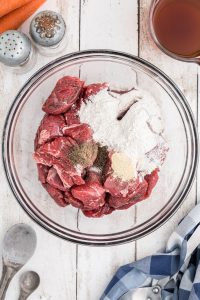Traditional Beef Stew Recipe
This post may contain affiliate links that won’t change your price but will share some commission.
Traditional Beef Stew is a hearty, comforting dish that combines beef, rich broth, and vegetables. This soup recipe is timeless and offers comfort and heartiness with every bite.
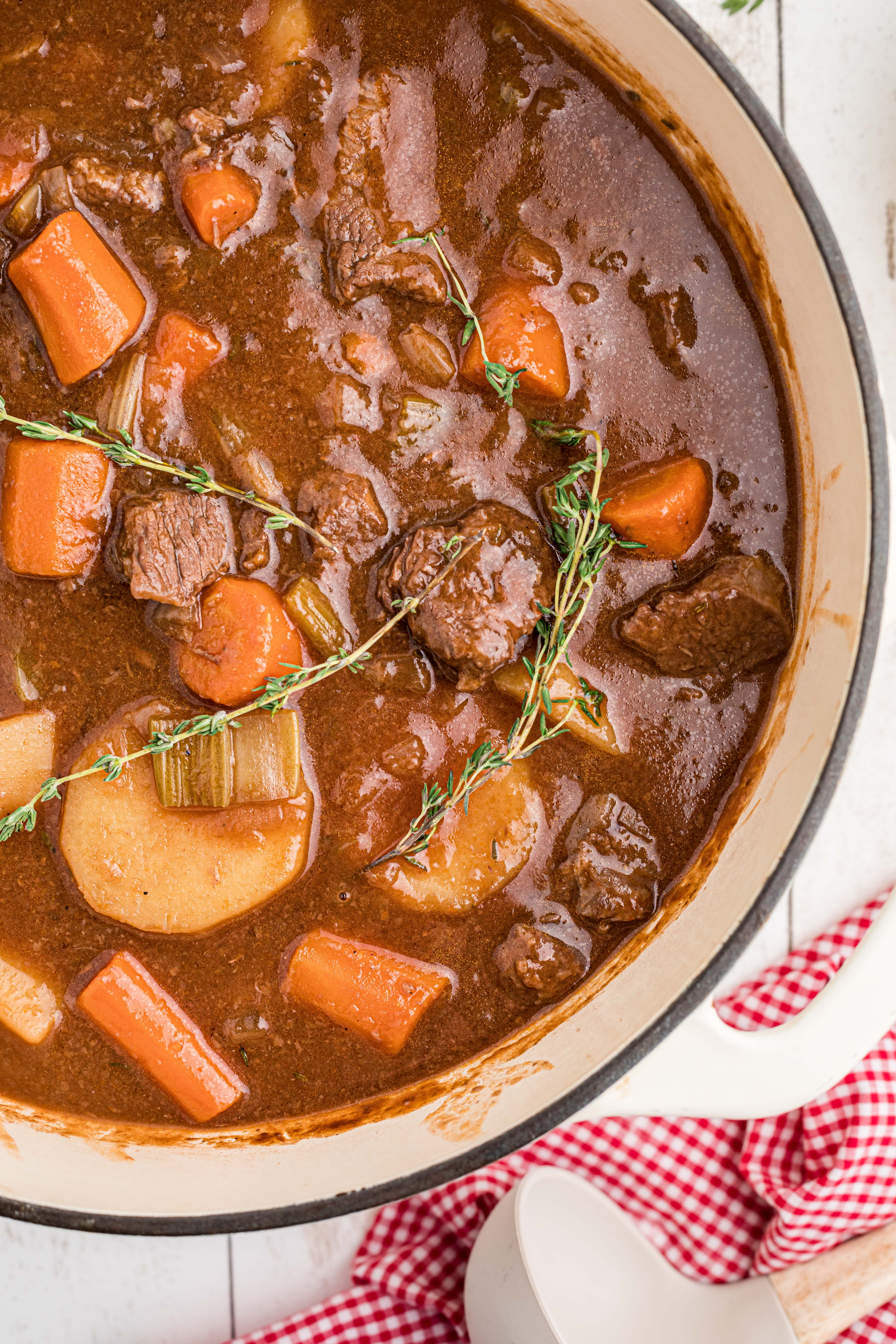
Traditional Beef Stew Recipe
Beef Stew is one of the coziest meals you can make. It warms your tummy and your soul. I love that the beef almost melts in your mouth. The best part of all is the potatoes that have soaked up the broth. I just want them!
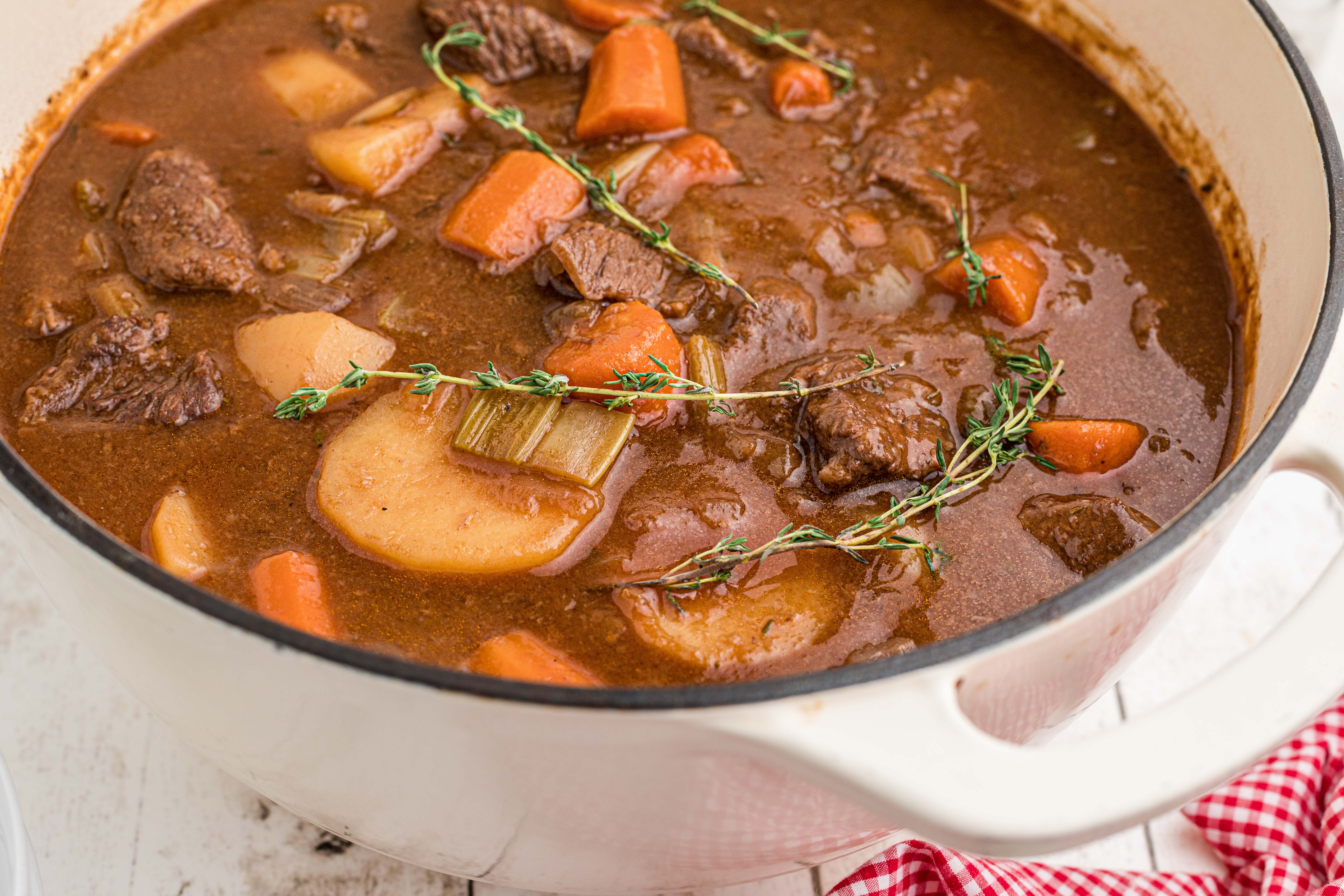
PMc says:
One thing I always do with beef stew is make it a day ahead. After letting it cool, I store it in the fridge overnight. The next day, the flavors have had even more time to blend together, making the stew taste richer and more robust. When you reheat it, it’s like the stew has come into its own—deeper and even more comforting than the day before.
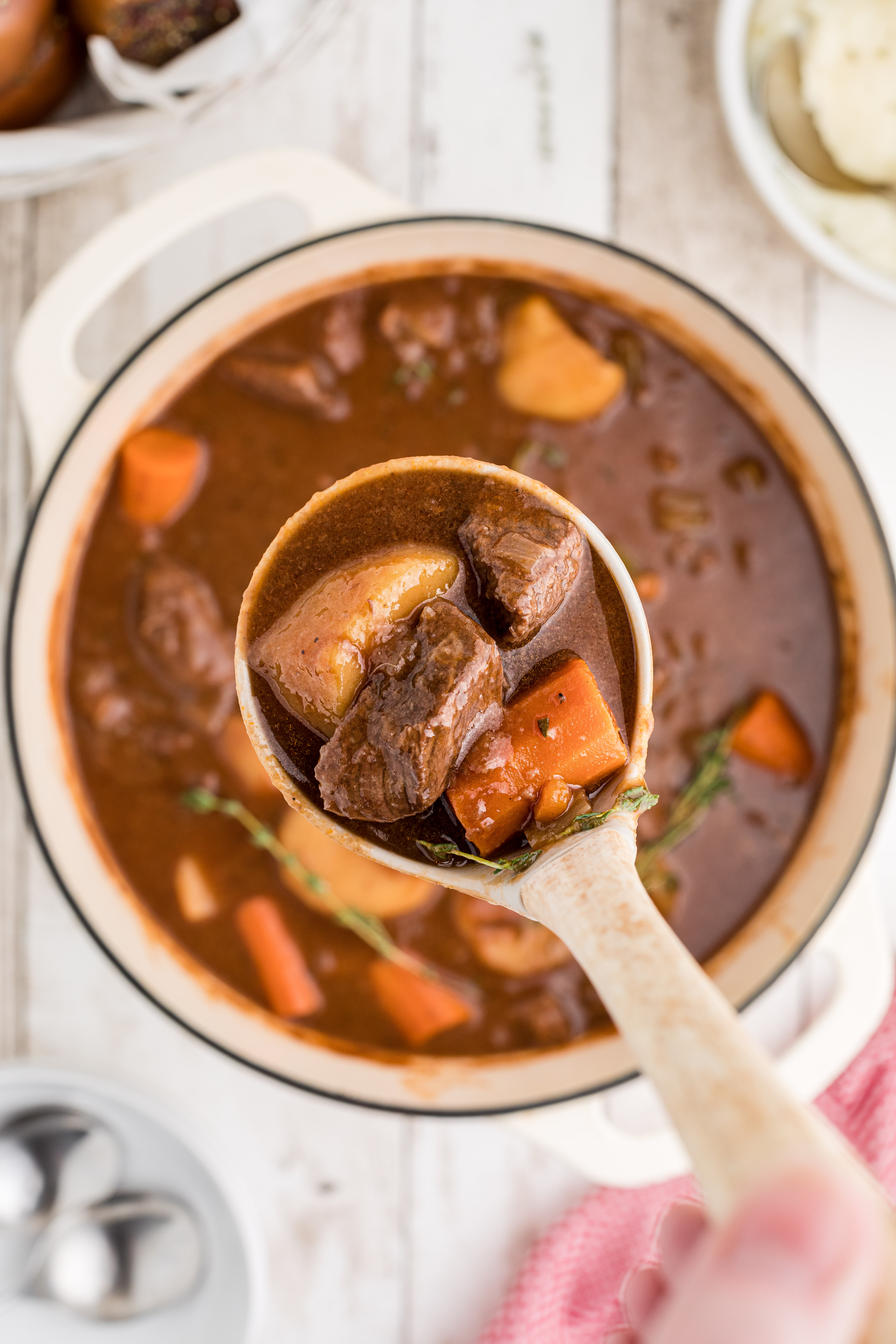
Ingredients
The full recipe with ingredient amounts and instructions is at the bottom of this post. You can save a tree and the recipe to your personal and private recipe box here on Call Me PMc. This way, you’ll never misplace it.
- *Beef Stew Meat
- All Purpose Flour
- garlic powder
- Salt
- Black Pepper
- Yellow Onion
- Olive Oil
- Beef Broth
- Red Wine
- Tomato Paste
- Red Wine Vinegar
- Yukon gold potatoes, Peeled and cut into 2″ pieces
- Carrots, peeled and chopped into 2″ pieces
- Celery Ribs, chopped
- Sprigs Fresh Thyme
- Bay Leaf
- Cornstarch and Water (optional for thickening)
What is ‘stew meat’?
Stew meat describes meat that is cut into chunks and then cooked in stew recipes. Stew meats can come in various beef cuts, such as round, chuck, or sirloin cuts.
What cut of beef is best for stew?
The best beef stew meat is tough cuts of beef with high-fat content. This gives soups and stews a rich flavor. Many cuts of beef are good for stew.
- Chuck: In my opinion, it’s the best cut for stew. Chuck comes from the shoulder area and is a top choice for stew because of its firm texture and moderate fat level. These cuts are generally larger and tend to be slightly pricier than a round roast.
- Bottom round: Top and Bottom round cuts of beef are good for stew because of their high-fat content and toughness. They typically cost less than chuck, making them a popular choice.
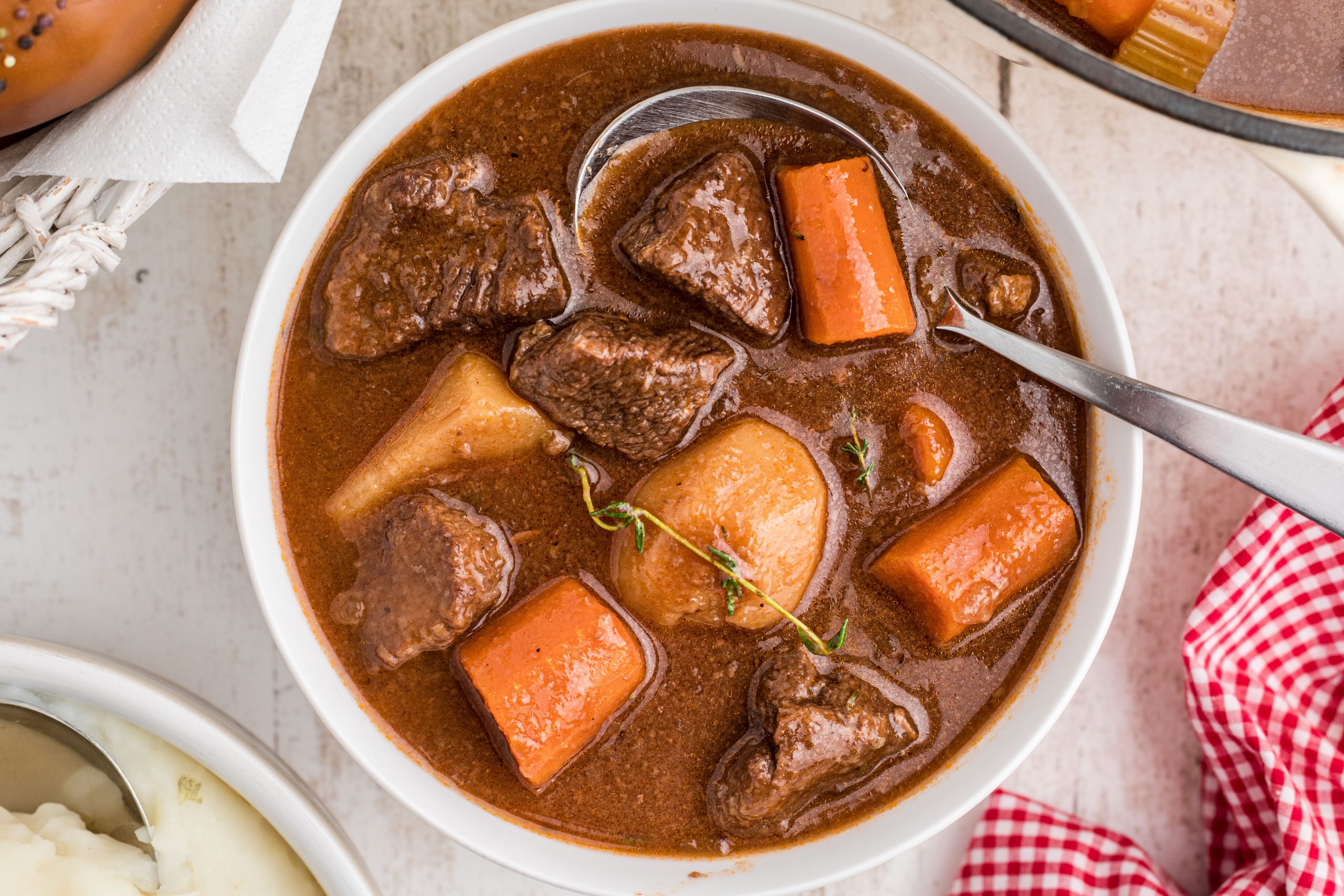
Cooking Tips for Traditional Beef Stew
- Brown the Meat First: Browning the beef in a hot pan helps build flavor by creating a nice crust on the meat. Don’t skip this step.
- Use the Right Potatoes: Yukon gold potatoes are ideal because they hold their shape and absorb the flavors of the stew well. Make sure you cut them into larger pieces so they don’t overcook.
- Deglaze the Pot: After browning the meat, deglaze the pot with beef broth and red wine. This lifts all the browned bits off the bottom of the pan. Those browned bits are flavor gold!
- Don’t skip Simmering: Stews are best when cooked low and slow. This allows the beef to become tender and for the flavors to meld together. Rushing the process can result in tough meat and underdeveloped flavors.
- Adjust the Thickness: If you prefer a thicker stew, use cornstarch mixed with water to thicken the broth. Add it near the end of cooking and stir until you reach the desired consistency.
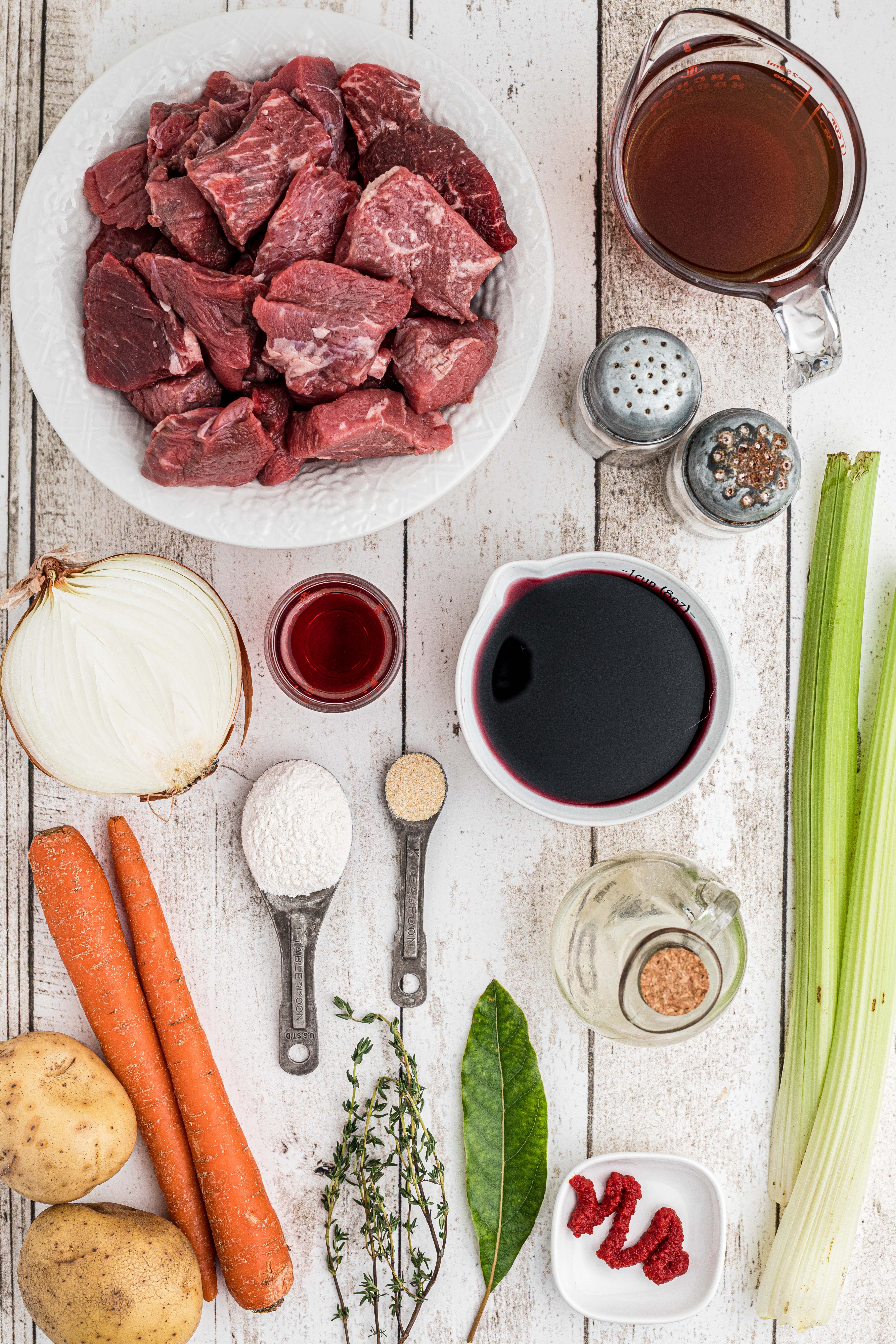
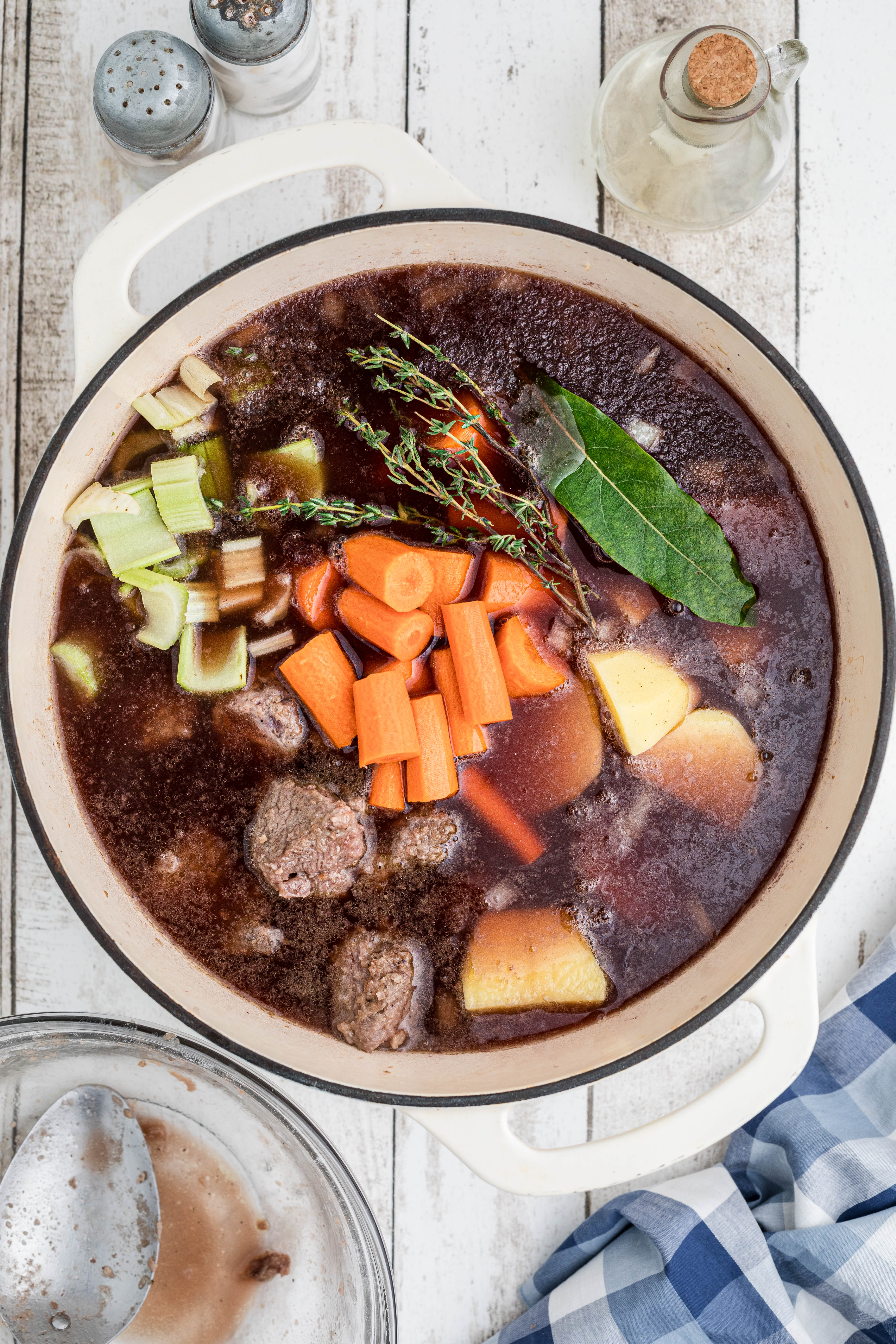
Traditional Beef Stew Frequently Asked Questions
How can I make my stew richer?
For a richer stew, you can add a bit more tomato paste or red wine. These ingredients deepen the flavor of the broth.
Can I use a slow cooker for this stew?
Yes, you can. After browning the meat and vegetables, transfer everything to a slow cooker and cook on low for 6-8 hours. This method ensures tender meat.
What’s the best way to store leftovers?
Store leftover beef stew in an airtight container in the fridge for up to 3 days. Reheat it on the stovetop for best results. You can also freeze it for up to 3 months.
Can I substitute the red wine?
If you prefer not to use red wine, beef broth or grape juice can be used as a substitute. The stew will still be flavorful, though it won’t have the same depth the wine provides.
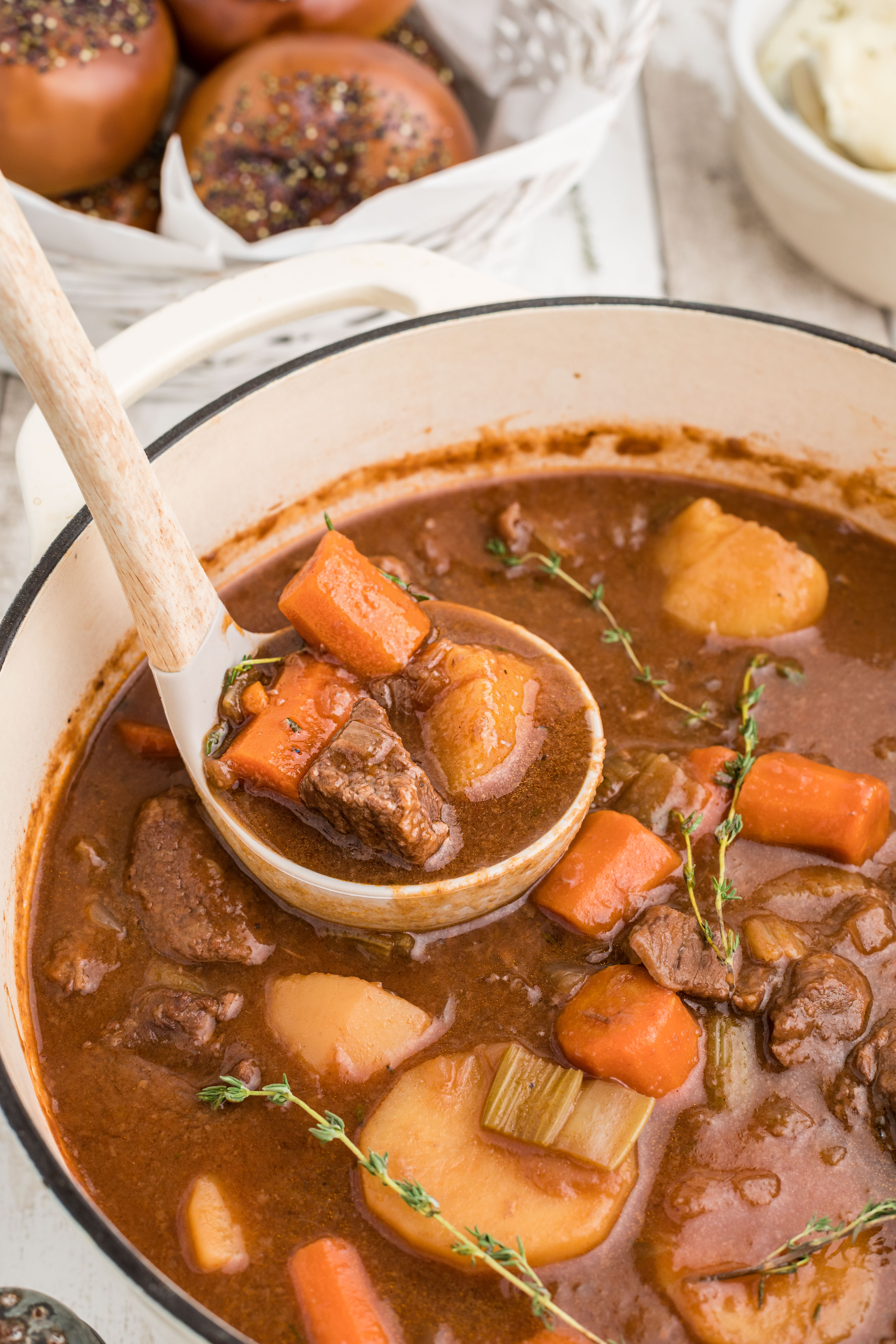
Traditional Beef Stew Conclusion
With a few simple techniques, you can create a flavorful, tender stew that warms you from the inside out. Whether you’re making it for a family dinner or to enjoy over a few days, beef stew is a go-to recipe you’ll return to again and again.
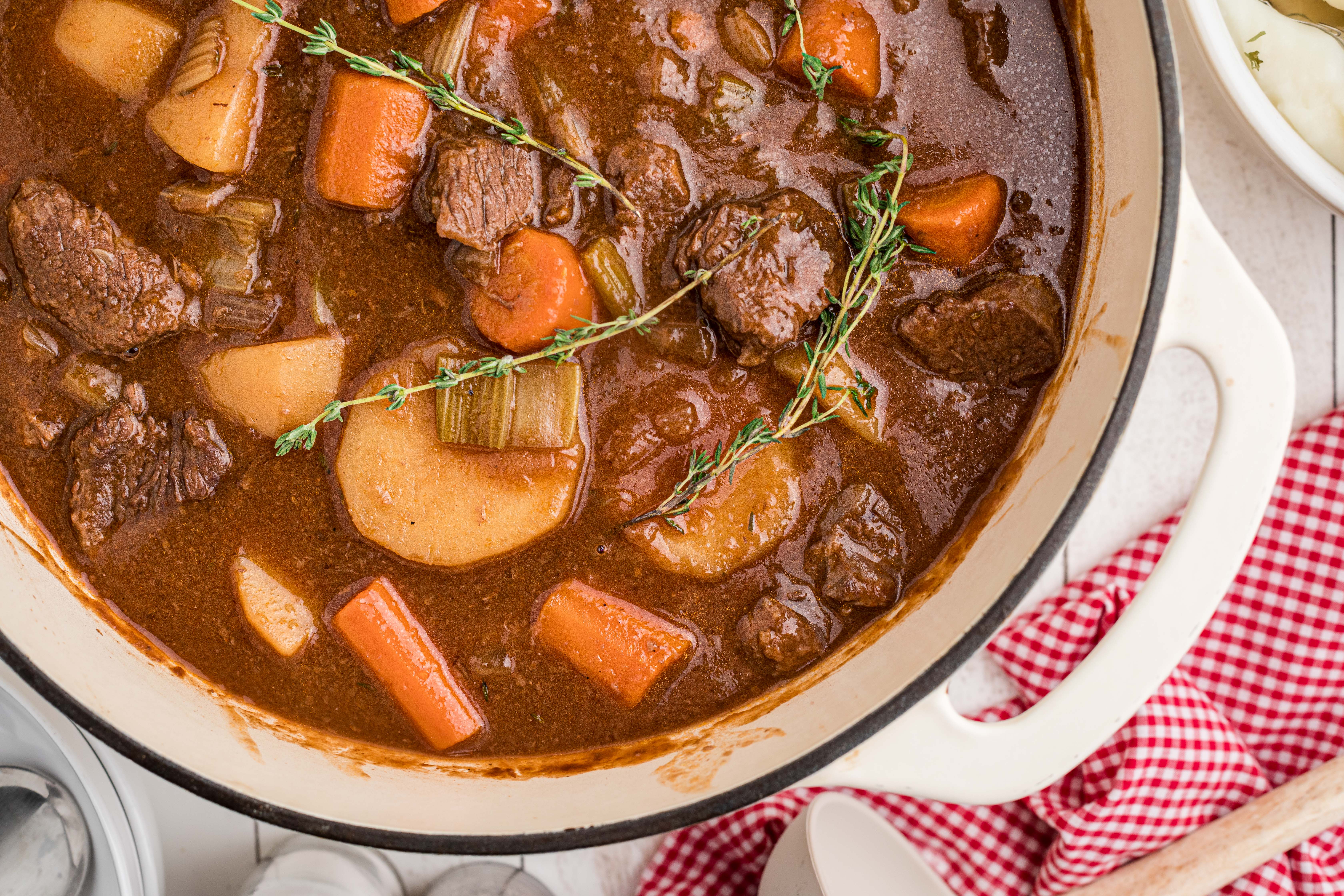
Make it a meal
Serve this traditional beef stew with brown sugar cornbread or cast iron skillet cornbread.
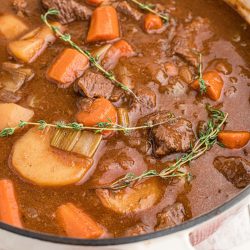
Traditional Beef Stew
Ingredients
- 2 pounds beef stew meat
- 4 Tablespoons All Purpose Flour
- ½ teaspoon garlic powder
- 1 teaspoon Salt
- ½ teaspoon Black Pepper
- 1 medium yellow onions diced
- 3 Tablespoons Olive Oil
- 6 Cups Beef Broth
- 1 Cup Red Wine
- 2 Tablespoons Tomato Paste
- 2 Tablespoons Red Wine Vinegar
- 1 pound Yukon gold potatoes Peeled and cut into 2″ pieces
- 4 large carrots peeledand chopped into 2• pieces
- 2 medium celery ribs chopped
- 3 springs fresh thyme
- 1 large bay leaf
- 1 tablespoon cornstarch optional for thickening
- 1 tablespoon water optional for thickening
Instructions
- Gather all your ingredients.

- Add the beef, flour, garlic powder, salt, and pepper to a large mixing bowl and stir evenly to coat.

- In a large Dutch Oven pot, add the olive oil and heat over medium-high heat.

- Add the stew meat and brown on all sides. Remove and set aside.

- Add the onions to the pot and scrape up the bits stuck to the bottom. For help, you can add a little of the broth to help loosen it up.

- Once all the bits are scraped up, and the onions are soft, add the beef broth and red wine.

- Then add the tomato paste, red wine vinegar, potatoes, carrots, celery, thyme and bay leaf. Give a good stir and then cover.

- Once the stew is boiling turn down the heat to a low simmer. Simmer for 2 hours, stirring occasionally to ensure nothing sticks to the bottom.
- Remove the bay leaf and the thyme stalks, serve and enjoy. If you want to thicken the stew a little more, add a little cornstarch slurry.

Nutrition
Nutritional information given is an automatic calculation and can vary based on the exact products you use and changes you make to the recipe. If these numbers are important to you, I recommend calculating them yourself.

